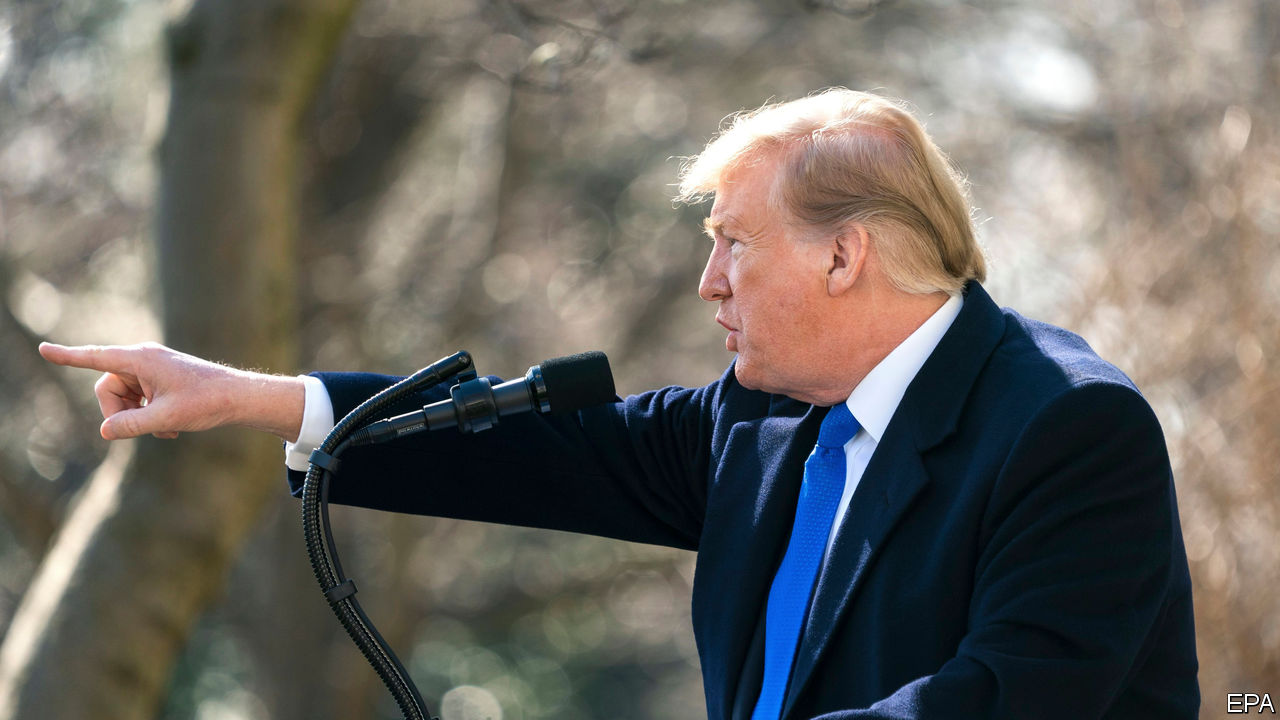
Editor’s note: This is an updated version of an article that was first published on February 15th 2019.
ON FEBRUARY 14th America avoided another shutdown when both chambers of Congress passed a spending bill that funds the government until the end of September. It includes billions in disaster relief, millions to tackle the opioid epidemic, and pay rises for federal workers. It does not include the $5.7bn for a border wall that President Donald Trump had demanded as his price for keeping the government open. Instead, it provides $1.3bn for 55 miles of steel fencing at the border—less than Mr Trump wanted, but rather more than the single dollar offered by Nancy Pelosi, the Speaker of the House of Representatives. The president has said he will sign the deal. Yet on February 15th Mr Trump said he would also declare a state of emergency at the southern border, which would allow him to redirect previously appropriated defence funds to his promised wall.
America’s border is imperfect, but it is not in the state of crisis that Mr Trump describes. In 2000, American border police caught more than 1.6m people crossing into America illegally. In 2017 they nabbed fewer than 400,000. More of the people crossing are families, including asylum-seekers whose cases can take years to make their way through the overburdened immigration-court system. But people and drugs are not, as the president maintains, pouring across an unguarded border.
The 1976 National Emergencies Act makes it relatively easy for a president to declare an emergency. Since the act’s passage 58 have been declared. Of these, 31 have been repeatedly renewed and are ongoing, including the National Emergency with Respect to Iran, first declared by Jimmy Carter in 1979. Emergency declarations provide a president with an array of expanded statutory powers. The two in which Mr Trump is most interested are provisions allowing him to redirect funding previously appropriated to the defence department and the army’s civil-works directorate for construction. Those statutes dictate that redirected spending must be restricted to “military construction projects” and projects “essential to the national defence”.
Whether the wall fits those requirements will probably, in the end, be a question for the Supreme Court. The Department of Justice has already warned Mr Trump that courts will block his emergency declaration, in which case he will appeal. House Democrats are eager to sue, but whether they have standing is unclear.
Landowners harmed by the wall’s construction would have standing. So could anyone who would have received the defence-department or army funding had it not been redirected. The money made available by the emergency declaration will come from funds appropriated for military-construction projects, around $3.5bn. Mr Trump also plans to move $600m from the Treasury Department’s drug forfeiture fund, and £2.5bn from the Department of Defence’s anti-drug activity. The total sum of money available from those sources, as well as the $1.375bn in the appropriations bill, is around $8bn. The Niskanen Centre, a centre-right think-tank, and Protect Democracy, a nonpartisan advocacy group, plan to sue on behalf of El Paso County—which claims reputational and financial damages—and the Border Network for Human Rights, an El Paso-based non-profit.
Congress has the power to undo an emergency declaration, but only with veto-proof majorities in both houses. That would require the defection of 55 Republicans in the House and 20 in the Senate, which is unlikely to come about, though some have grumbled. Rand Paul, a senator from Kentucky who has been generally supportive of Mr Trump, said that “extraconstitutional executive actions are always wrong, no matter which party does them.” Senator Marco Rubio of Florida, speaking for many Republicans, said he worried about the precedent Mr Trump’s declaration would set for a future Democratic administration. A “future president may use this exact same tactic to impose a Green New Deal,” he said.
Susan Collins, Maine’s senior senator, believes Mr Trump’s plan is “of dubious constitutionality.” Many more are probably privately uncomfortable. But they also like their jobs and fear primary challengers from the right. Their record hitherto of bending to Mr Trump suggests they are unlikely to do much more than chide him. Meanwhile, Mitch McConnell, the Republican leader in the Senate, and Lindsey Graham of South Carolina both said they would support the emergency declaration.
Traditionally courts give presidents wide latitude on questions of national security. But they have been sceptical of the national-security rationales for Mr Trump’s steel tariffs and the first two versions of his travel ban. This suggests, at the very least, that a lengthy court battle lies ahead. Though the Supreme Court ultimately upheld Mr Trump’s travel restrictions, an older precedent should give the White House less comfort. In 1952, Harry Truman tried to seize and operate major American steel mills without congressional authority after workers declared a strike. The court found that he exceeded his power. Robert Jackson, in his concurrence, held that a president’s power “is at its lowest ebb” when he “takes measures incompatible with the expressed or implied will of Congress.”








